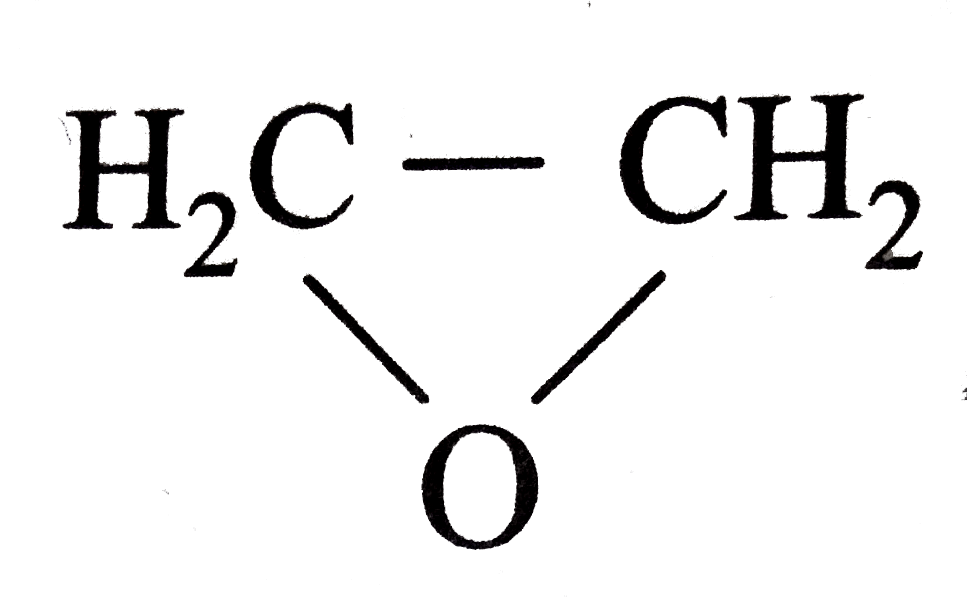(CH3)3ClNaCl−−→Adil.H2SO4−−−−−−→BCompound B is
(CH)3COOOH
(CH3)3COH
(CH3)3COC(CH3)3
All the three
The correct Answer is:D
To solve the problem, we need to analyze the reactions step by step.
Step 1: Identify the starting compound
The starting compound is (CH₃)₃Cl, which is tert-butyl chloride (tert-butyl group with a chlorine atom).
Step 2: Reaction with NaCl
When tert-butyl chloride reacts with NaCl, we can expect a nucleophilic substitution reaction. However, since tert-butyl chloride is a tertiary halide, it is more likely to undergo an elimination reaction rather than substitution.
In the presence of NaCl, the chloride ion (Cl⁻) can leave, leading to the formation of a tert-butyl cation (CH₃)₃C⁺.
Step 3: Elimination Reaction
The tert-butyl cation is very stable and can undergo an elimination reaction. In the presence of a strong base, such as NaCN, it can lose a proton (H⁺) to form an alkene.
The elimination of H⁺ from the tert-butyl cation results in the formation of isobutylene (2-methylpropene):
\( (CH₃)₃C⁺ \rightarrow CH₂=C(CH₃)₂ \)
Step 4: Reaction with Dilute H₂SO₄
Next, the alkene (isobutylene) reacts with dilute sulfuric acid (H₂SO₄). In this reaction, the alkene undergoes hydration. The double bond in isobutylene will react with H⁺ from H₂SO₄, leading to the formation of a carbocation.
The carbocation formed can then react with water (H₂O) to form an alcohol. The water molecule acts as a nucleophile and attacks the carbocation, resulting in the formation of tert-butyl alcohol:
\( CH₂=C(CH₃)₂ + H₂O \rightarrow (CH₃)₃COH \)
Step 5: Final Product
The final product, compound B, is tert-butyl alcohol, which can be represented as:
\( (CH₃)₃COH \)
Conclusion
Thus, the compound B formed after the reactions is tert-butyl alcohol.
---
The starting compound is (CH₃)₃Cl, which is tert-butyl chloride (tert-butyl group with a chlorine atom).
When tert-butyl chloride reacts with NaCl, we can expect a nucleophilic substitution reaction. However, since tert-butyl chloride is a tertiary halide, it is more likely to undergo an elimination reaction rather than substitution.
The tert-butyl cation is very stable and can undergo an elimination reaction. In the presence of a strong base, such as NaCN, it can lose a proton (H⁺) to form an alkene.
\( (CH₃)₃C⁺ \rightarrow CH₂=C(CH₃)₂ \)
Next, the alkene (isobutylene) reacts with dilute sulfuric acid (H₂SO₄). In this reaction, the alkene undergoes hydration. The double bond in isobutylene will react with H⁺ from H₂SO₄, leading to the formation of a carbocation.
\( CH₂=C(CH₃)₂ + H₂O \rightarrow (CH₃)₃COH \)
The final product, compound B, is tert-butyl alcohol, which can be represented as:
\( (CH₃)₃COH \)
Thus, the compound B formed after the reactions is tert-butyl alcohol.
Topper's Solved these Questions
- BOOK - DISHA PUBLICATIONCHAPTER - HALOALKANES AND HALOARENES EXERCISE - Exercise-1:Concept Builder(Topicwise)(TOPIC 3:)(Preparation and Properties of Halorenes)7videos
HALOALKANES AND HALOARENES
- BOOK - DISHA PUBLICATIONCHAPTER - HALOALKANES AND HALOARENES EXERCISE - Exercise-1:Concept Builder(Topicwise)(TOPIC 4)(Some Important Polyhalogen Compounds)13videos
HALOALKANES AND HALOARENES
- BOOK - DISHA PUBLICATIONCHAPTER - HALOALKANES AND HALOARENES EXERCISE - Exercise-1:Concept Builder(Topicwise)(TOPIC 1:)(General Characteristics of Haloakanes and Halorenes)9videos
HALOALKANES AND HALOARENES
- BOOK - DISHA PUBLICATIONCHAPTER - GENERAL PRINCIPLES AND PROCESSES OF ISOLATION OF ELEMENTSEXERCISE - EXERCISE -1: CONCEPT APPLICATOR35videos
GENERAL PRINCIPLES AND PROCESSES OF ISOLATION OF ELEMENTS
- BOOK - DISHA PUBLICATIONCHAPTER - HYDROCARBONSEXERCISE - EXERCISE -2 CONCEPT APPLICATOR29videos
HYDROCARBONS
Similar Questions
Knowledge Check
- Question 1 - Select One
In the following sequence of reactions, the alkene affords the compound 'B'
CH3CH=CHCH3O3−−→AH2O−−→B compound B is :ACH3CH3CHOBCH3COCH3CCH3CH2COCH3DCH3CHO - Question 2 - Select One
Consider the following reaction sequence
PhCH2CH(OH)CH3conc.H2SO4−−−−−−−−→heatAdil.H2SO4−−−−−−→B The product (B) isAPhCH=CHCH3BPhCH2OH∣CHCH3CPhCH2CH2CH2OHDPhCH(OH)CH2CH3 - Question 3 - Select One
CH2=CH2HOCl−−−→Adil.NaOH−−−−−→B
The final product B formed in the above reaction isAHOCH2CH2OHB CClCH2CH2OnaDClCH2CH2OH
CClCH2CH2OnaDClCH2CH2OH
Isobutene HBr−−−−→peroxideAKCN−−→Bdil.H2SO4−−−−−−→C+ inorganic salt D
C and D areView SolutionThe compound (B) in the below reaction is ,
C2H5ClKCN−−→AH3O+−−−→BView SolutionIdentify B in the following sequence,
CH3CH2CH2OHPCl3−−→Aalc.KOH−−−−→B :View SolutionIdentify B in the following sequence,
CH3CH2CH2OHPCl3−−→Aalc.KOH−−−−→B :View SolutionIn the following sequence of reactions
(CH3)2COHN3−−−→H2SO4AH2O−−→B
The end product 'B' is .View Solution

